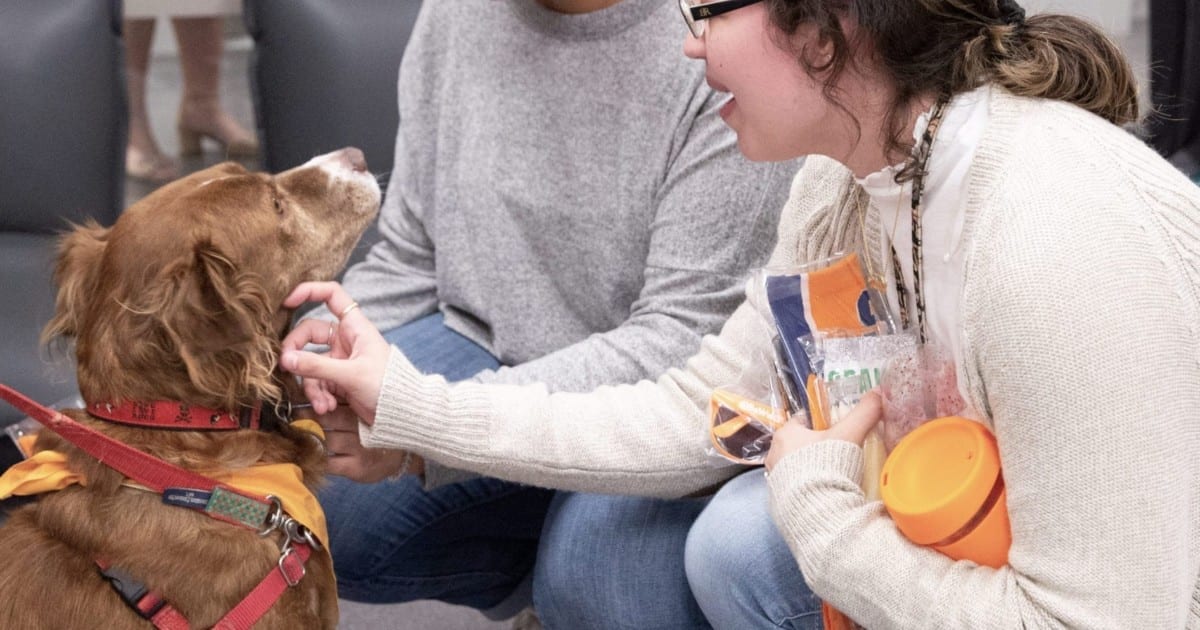Marcia Morris, MD
Dr. Marcia Morris wears a lot of hats. A psychiatrist at the University of Florida, Morris is an author, a blogger, an administrator, a professor and a parent of two young adults.
In addition to teaching at the University of Florida Medical School, she is the Associate Program Director for the Student Health Care Center Psychiatry where she works on improving care delivery and access for students with high acuity mental health problems.
Morris’ work with high-risk patients frequently involves their parents, a stakeholder group she believes is a critical yet underutilized resource in college student mental health.
“Parents can be lifesaving for students with mental illness,” she said, noting she asks all of her patients to sign a HIPPA release form allowing her to communicate directly with them about their student’s health. “They can intervene ahead of problems and can support follow-up after treatment.”
Morris is the author of The Campus Cure: A Parent’s Guide to Mental Health and Wellness for College Students, She says she wrote the book to educate parents on how to help students prevent mental health issues before they occur as well as get the right treatment when they need it.
Morris also writes a blog, which often appears in Psychology Today, called “College Wellness: Promoting Happiness and Health in the College Years” with ongoing advice on a range of topics, including knowing what resources are available.
“I advise every parent – whether their student has a mental health issue or not — to look into the mental health services of every school their student is applying to,” she said.
Morris’ passion for helping students with mental illness and their families stems from her days in medical school when she saw the potential for recovery in a young man with severe psychosis.
“I saw great resiliency in this young person,” she said. “I saw how the combination of medication, individual therapy, and family therapy helped him work towards recovery.”
Some of Morris’ current patients at University of Florida have been hospitalized or have attempted suicide. This high-risk cohort is often the subject of debate about an institution’s responsibility, as well as capacity, to care for these students either on campus or in the community. Morris believes that either way, it’s on the college, and all of us, to do so.
“Three quarters of mental illness will develop by the time someone turns 24 which correlates directly with the college years,” she said. “My belief is schools need to provide treatment for young adults who are having mental health issues on campus, or connect them with affordable resources off campus. It’s something we, as a society, should be supportive of.”
Morris points to the evidence-based strategies utilized with high-risk students that involve teams of specialists such as a therapist, psychiatrist, and case worker. The psychiatry clinic at University of Florida has nurses who can prescribe and a case manager who follows up with students.
She acknowledges that many schools lack the resources for this kind of specialized care but believes it is worth striving for, given that staying in school is most often the student’s preference. She says that campus providers, albeit in limited supply, are more experienced working with these students; and that disability offices, now present on most campuses, can fill in gaps.
“The hope is that students with mental illness can stay in school, with their friends, where they can continue their academics while getting help for their diagnosis,” she said.
Morris recently published a report called “Recovering in Place” which explored how colleges respond to students on campus with serious mental health problems – from encouraging or requiring them to take a leave of absence, to creating treatment programs and reducing course loads to treat students in place.
The report highlights on-campus post-hospitalization programs, intensive outpatient groups, specialized treatment and other unique programs that enable high-risk college students to recover on campus. The report suggests that choosing the right path for students with mental illness—whether it is staying in school, transferring to a college closer to home, or taking a leave of absence—will be different in every case and, again, should involve the input of parents in all possible cases.
The last chapter of Morris’ book is called “Heartbreak and Hope” which acknowledges the fear involved in seeing your child experience mental illness—and the promise that exists in finding the right treatment that will allow them to thrive.
“I’ve seen wonderful stories of recovery,” she said. “In fact, I would say a large majority of my students are able to stay in school and graduate. I feel very hopeful about the work I do.”
Andrew Campbell

As Andrew Campbell points out, there is perhaps no item more personal to today’s college students than their smart phone.
With them at all times, the device has become like an appendage—to the annoyance of many and the concern of mental health experts.
But what if their phone’s perennial presence provided an opportunity to learn about student behaviors that could lead to the improvement of their mental health — or, at least, an indication of their wellbeing.
This was the question that prompted Campbell’s last ten years of study and the genesis of a global curiosity about using artificial intelligence in mental health outcomes.
Campbell is the Albert Bradley 1915 Third Century professor in computer science at Dartmouth College. His research focuses on the development of mobile sensing technology in phones and wearables capable of accurately assessing mental health using machine learning and predictive analytics.
“These devices give off a lot of information about behavior,” he said. “When you look at that from the life of a student—day to day, week to week, quarter to quarter—you can relate these behaviors to what’s being reported about depression and anxiety.”
Campbell’s work in this area has created a new field of sensing research that has application across a range of industries. His focus, however, remains the mental health of college students for reasons both personal and professional.
A native of England, Campbell’s older brother experienced a mental health crisis while at university and had to leave school.
As a professor, first at Columbia and then at Dartmouth, Campbell became aware of the rising rates of anxiety and depression among students. In class, he observed patterns in student behavior, like attendance and attentativeness, based on the school calendar, i.e., mid-terms, finals, or major social weekends.
“I witnessed highly stressed students or students that fell asleep in class or students that just disappeared from my class entirely and I first thought – ‘is it my delivery?’” he said, jokingly.
“But I started to track these behaviors to what was going on within the environment and I thought – if I can determine that as a lecturer, there must be some way to get data on these correlations.”
In 2012, Campbell launched his first “Student Life Study”—and the first ever to use passive and automatic sensing data from phones and wearables to assess mental health, academic performance and behavioral trends in college students.
Its aim was to help shed light on important questions about student success such as why some students burnout or drop out while others excel, and what factors impact those outcomes. In conducting the study, Campbell engaged 48 of his own students in a trial that lasted 10 weeks.
The team gave the students an extended Android phone with an app that could detect a number of factors including their level of activity, the number of face-to-face conversations they had and their sleep patterns.
(The algorithms Campbell and his team developed at Dartmouth were the precursors to the sensing technology now common in smartphone operating systems.)
The students were given a pre and post-trial survey that included the DSM-5 depression scale as well as the loneliness and flourishing scales.
With the use of “linear regression analysis” the team determined relationships between what the phone detected and what the students reported.
The data indicated a wealth of information about the impact of stress, partying, sleep, relationships and isolation.
Campbell’s data even showed what factors led to changes in anxiety levels over time, like the fact that student stress levels significantly increased two weeks prior to them returning to school after break.
This kind of information, he said, can prompt precise responses from administrators.
In 2015, Campbell launched the Student Life Study 2.0 which focused more specifically on depression detection and prediction. Version 3.0, launched in 2017, involves 200 incoming students who will participate over four years.
The study has already provided some interesting insights such as the drop-off in self-esteem from first to second year.
Campbell acknowledges that using sensing data on student’s phones to detect and predict performance and mood can seem a little “creepy” but his hypothesis about how to use this work to improve college student mental health is certainly mind-opening.
“I am not in the game to expose students’ privacy but through this technology we can intervene in ways that keeps them healthy and in school,” he said.
Campbell believes that providing personalized interventions based on what the phone reveals about students is where the real innovation comes in and where the sensing research field is going.
By 2023, Campbell and his team hope for a breakthrough in using phones to not only detect and predict mental health issues in college students but to also address them.
“If phones are able to predict reasonably accurate scores on depression and anxiety, then they can also be the source of interventions that can help a good number of students with these issues.”
Campbell points to the widely reported shortage of counselors on college campuses as a major motivation for moving forward with the technology and sees phone-based solutions like customized cognitive behavioral therapy apps as part of the future.
“We have to get something in the hands of students that can augment mental health services,” he said. “There are simply not enough counselors to serve the need.”
Campbell is well aware that technology solutions in college student mental health remain subject to skepticism with concerns that range from clinical quality to replacing staff to utilizing what many believe to be the source of the problem.
For these reasons, he believes the adoption of these technologies will need to be highly personalized and developed through extensive trial and error.
Regarding the student/phone relationship, Campbell is agnostic but also optimistic.
“The smart phone literally changed everything and the genie is not going back into the bottle,” he said. “We need to consider the flip side of this and figure out how to use these devices as tools for good.”



